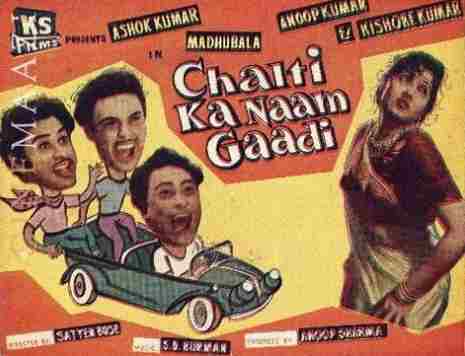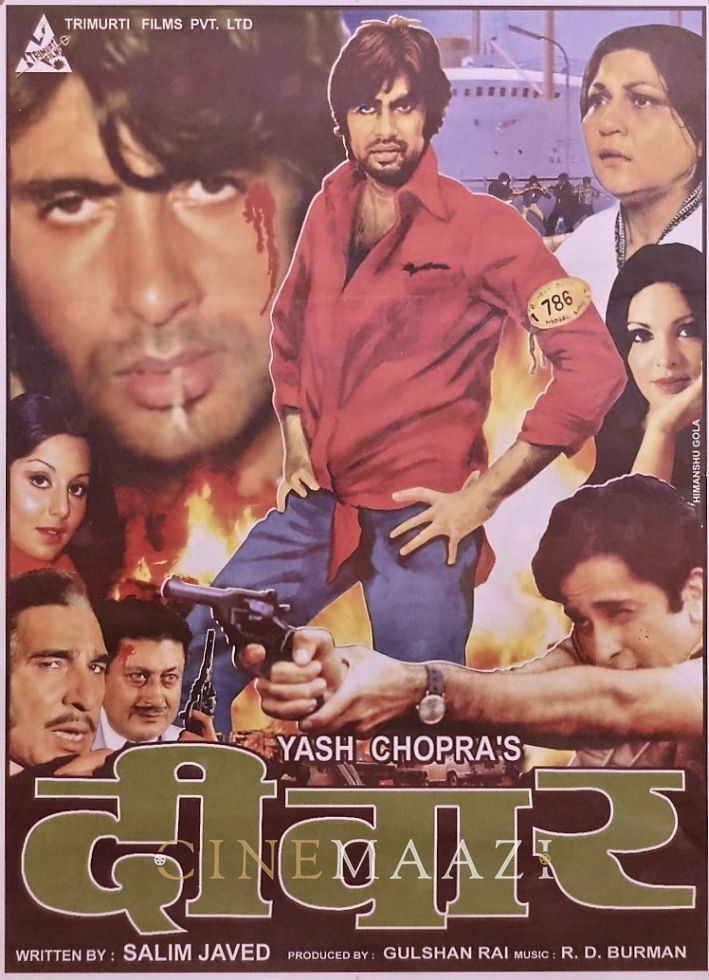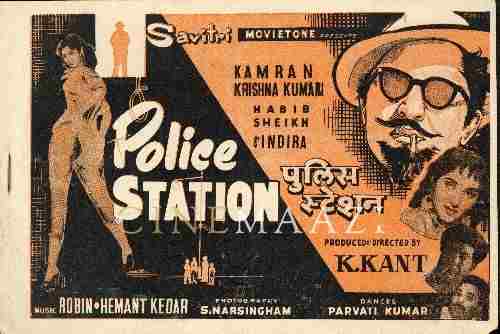Export Market For Indian Films
Among the major film producing countries in the world, India can claim to have an export market, perhaps second only to U.S.A. This is poor consolation indeed! While Hollywood films occupy 60% of the world's screening time, India does not have more than 5%. The fact that other counties may be in a worse position does not add to India's glory.
Be that as it may, it is heartening to note that the export market for Indian films has been steadily expanding since national independence. The loss of the Pakistan market dealt a serious blow to the industry, but the expansion in other countries has made good the loss to some extent. Before the war the value of the overseas market was usually counted at 5% of the revenue of an average successful picture; today it is 15 to 20%. And it is no exaggeration to say, that overseas film distribution business has turned out to be one of the most profitable lines in the Industry. It is less competitive, less risky and least amenable to any 'check'.
Today the foreign market for Indian films is confined to Africa, Middle East and Far East, i.e. the countries in which Indian nationals live or whose culture and customs are akin to those of India. The approximate price a producer may receive from the existing market on successful picture would be as follows, although the price is not strictly capable of such generalisation:-
East Africa & Mauritius Rs. 50,000
Egypt 4,000
West Indies 6,000
Fiji Islands 4,000
Malaya 4,000
Indonesia 20,000
Hongkong, Formosa 3,000
Siam 3,000
Bahrain& Persian Gulf Area 3,000
Afghanistan 2,000
Aden 2,000
----------------
Rs. 1,01,000
----------------
Burma is taken with Bengal Circuit, according to trade practice, while Ceylon goes with the South. Aden is usually included in Bombay Circuit. There are potentialities for expanding the market in all countries of Asia and the Middle East. America and Europe have been virtually closed to Indian films, partly because of the well-developed national film industry in those countries and partly because of the difficulties of obtaining release facilities for Indian films. In U.S.S.R. and other countries, where the Industry is completely nationalized the market has necessarily to depend on political goodwill, which has been built up in a large measure by our national policy of world peace and international goodwill.
Taking the number of theatres in each country as the market potential, it will be found that India's market potential is about 5.5% of the world market. This may be slightly more if exhibition of some of the pictures in U.S.S.R. is taken into account. This may be increased upto 10% if our films gain a foothold in Japan, China and countries in Middle East and Far East where Indian films are not yet being shown. And yet 90% of the market potential in Europe and America will remain closed to India, unless this market is tapped on a different basis.
Out of this total, Indian films are shown in a few theatres in the countries mentioned below:-
which some show Indian films
Aden 8
Afghanistan 8
Burma 144
Ceylon 140
Formosa 294
Hongkong 56
Indo-China 80
Indonesia 714
Singapore & Malaya 236
Siam 212
Fiji Island 16
West Indies 19
Egypt 359
East Africa 224
-----------------
Total 2510
-----------------

Today the overseas market is controlled by mainly two distributors who are actuated by financial considerations and are not often willing to incur expenses on publicity and other measures required to explore new fields. Whatever market has been gained is primarily due to the intrinsic merits of Indian films to appeal to the Indian nationals living abroad and to the nationals of other countries who appreciate oriental stories and Indian music and dances. For instance, in countries like Indonesia and Egypt, Muslim subjects and pictures of the 'Aladin' type are popular. In Malaya, Tamil subjects are more popular because of the large number of Tamil-speaking population settled down there.
Exploration of the foreign market has to be done on a collective basis by the producers themselves. At present, some of the producers seem to think that they are not able to secure best prices from the overseas market since they sell the rights while the picture is underproduction due to financial exigencies.
1. Producers should form their own cooperative society to explore the foreign market. Every producer can be a member of the society and his picture, if suitable, can be exploited in foreign countries. The society can build up a reserve to give advances to its members and to do publicity for new markets. It should have its own branches in important centres from which distribution should be controlled.
2. Government should actively assist the Society by helping it whenever exchange or import control regulations stand in the way of proper exploitation in any country.
3. The Society should be able to incur expenses incidental to the exploitation of any picture abroad, for dubbing or subtitling wherever necessary. It will not be necessary, nor will it be prudent, to send all films to all available markets. Exploitation has to be done on a selective basis to secure the best financial gains. The Society should be able to sponsor participation in international film festivals and incur the expenses connected therewith.
4. Unless the producer is able to stand on his legs at home, he will find it difficult to think of a foreign market or to join a co-operative society. For anything concerning the Indian Film, the producer has to be helped to be financially stable with a better market at home.
5. There will be more difficulties in tapping the market in Europe and America. Even this would be possible by a well-established society slowly and steadily.
With co-ordination among producers and co-operation from Government, expansion of the foreign market for Indian films will be possible, despite restrictive measures which may be adopted by other countries.
This article was written by M K and was part of Film Industry of India compiled by B K Adarsh in 1963.








.jpg)


